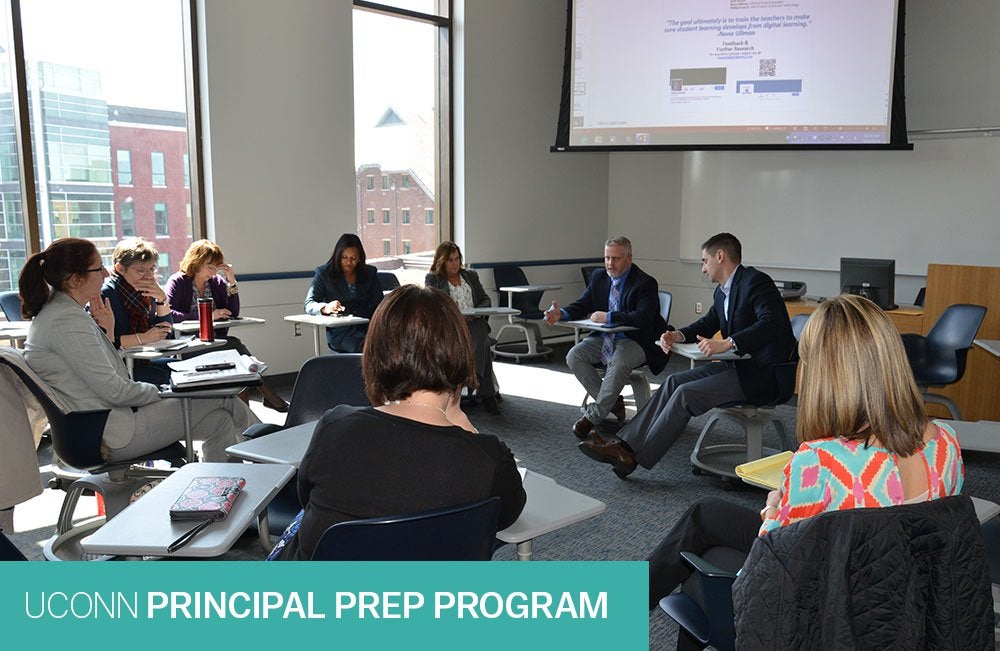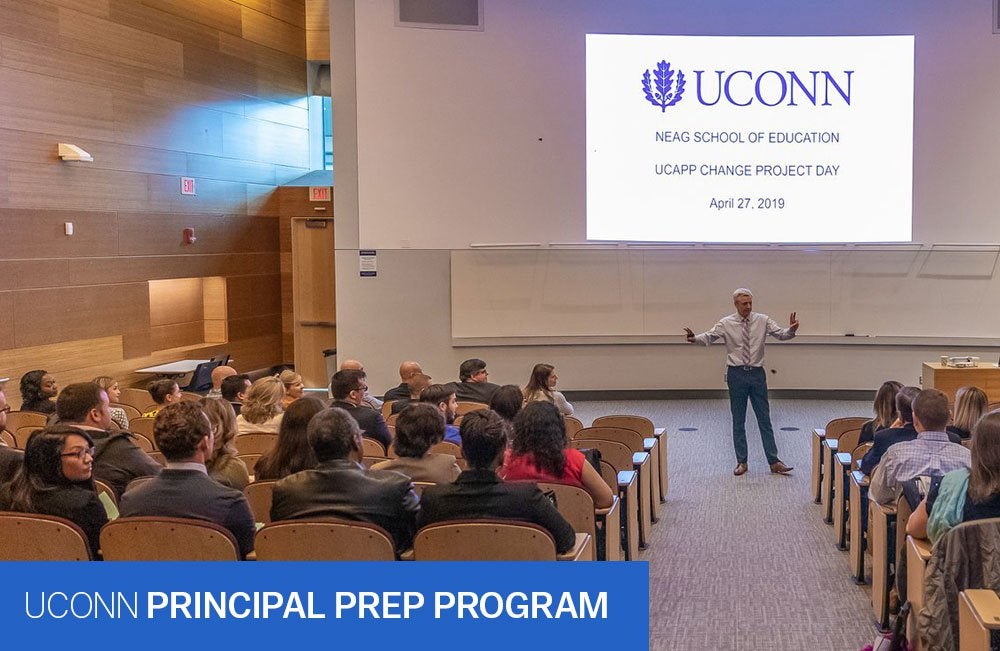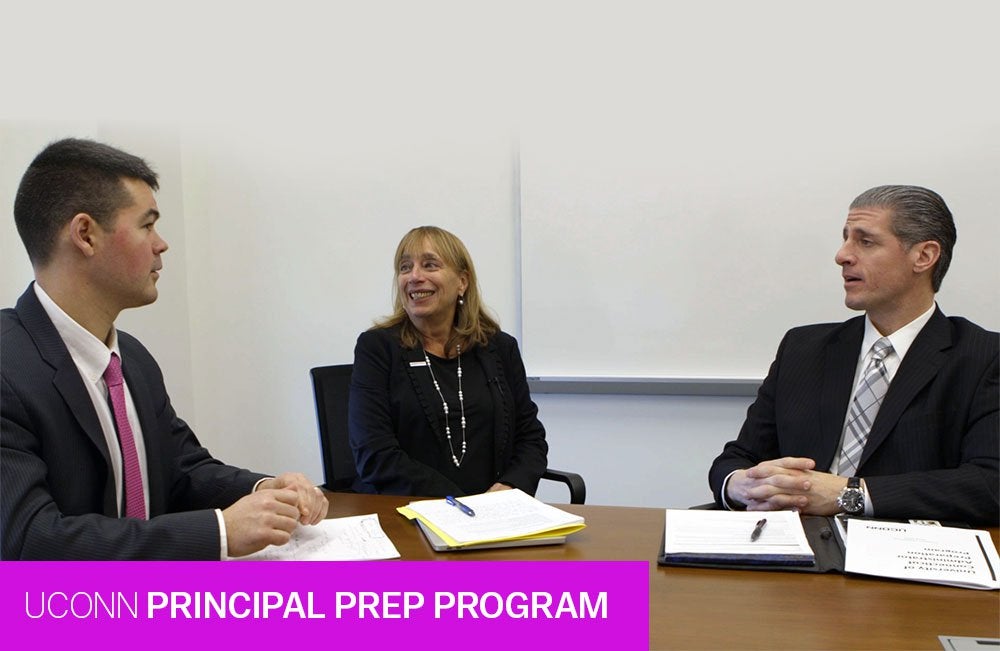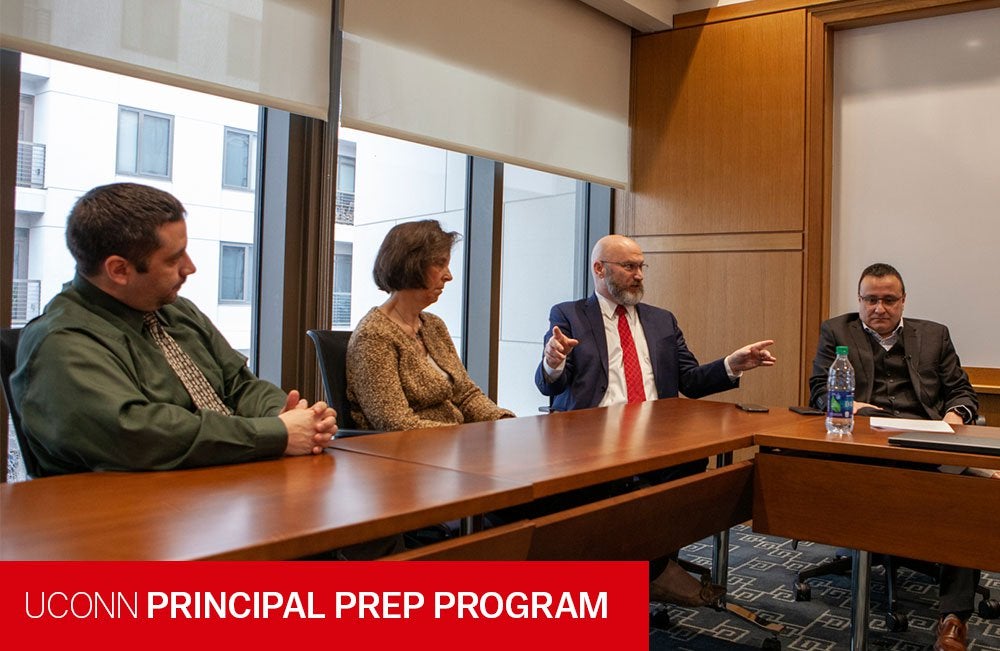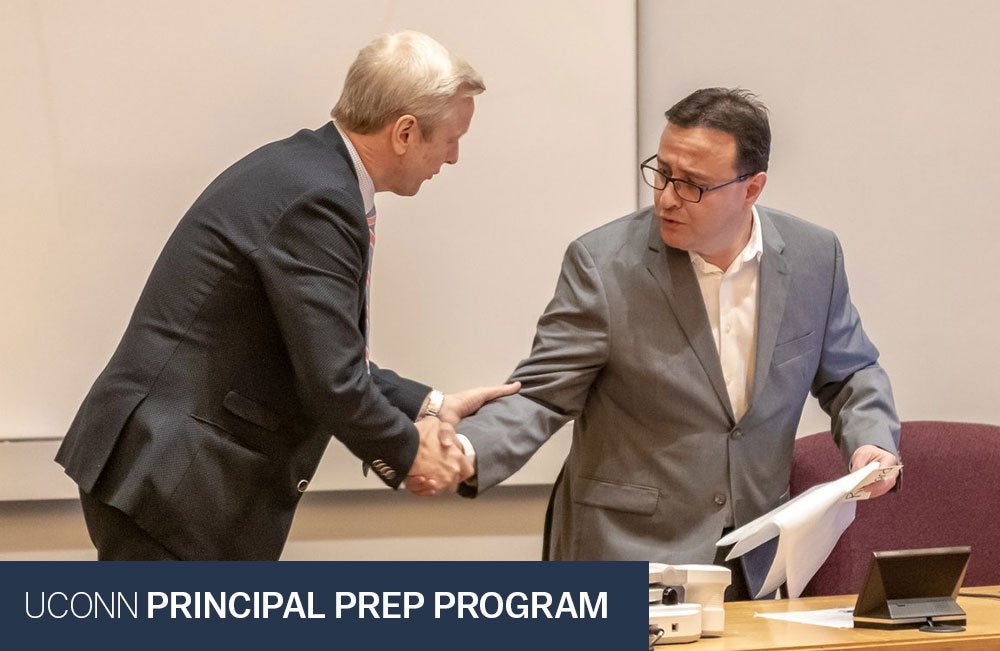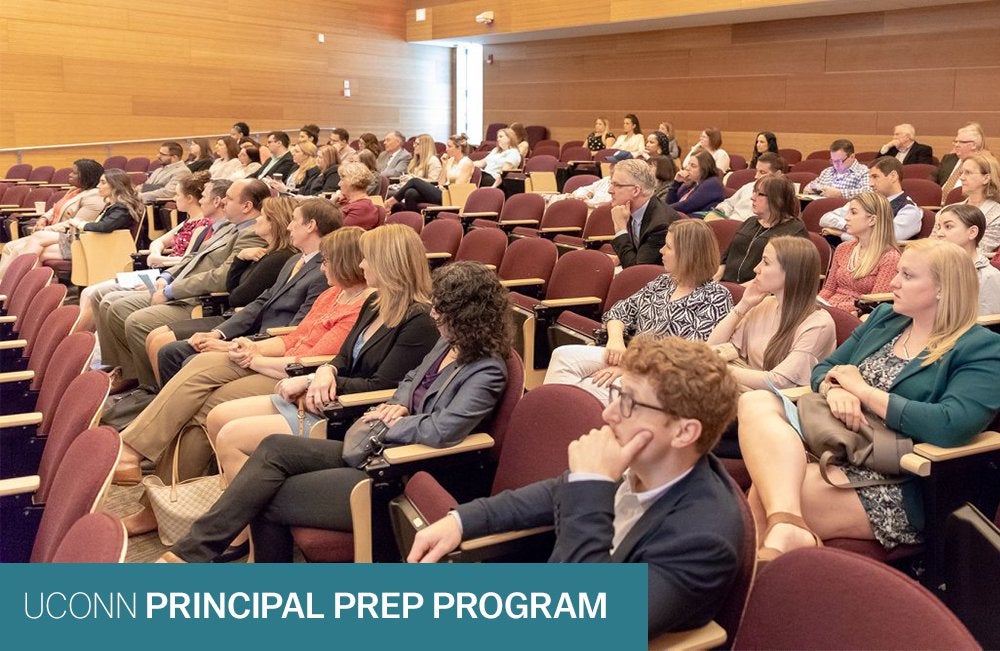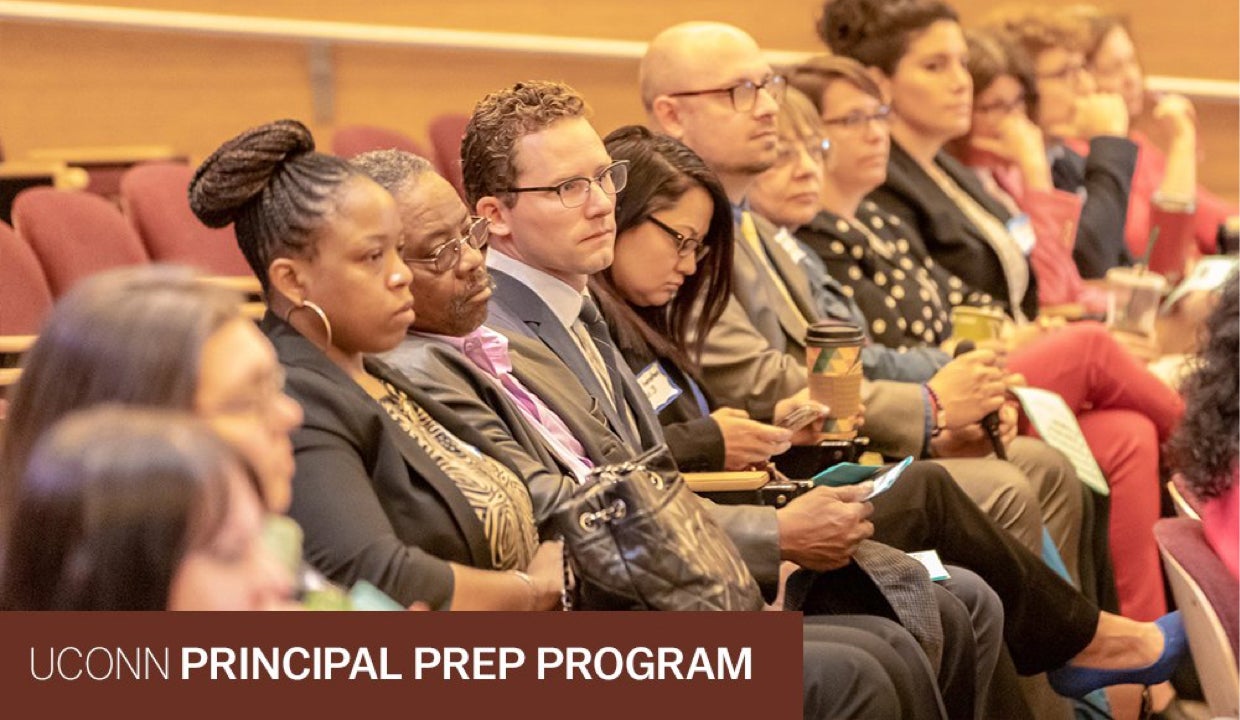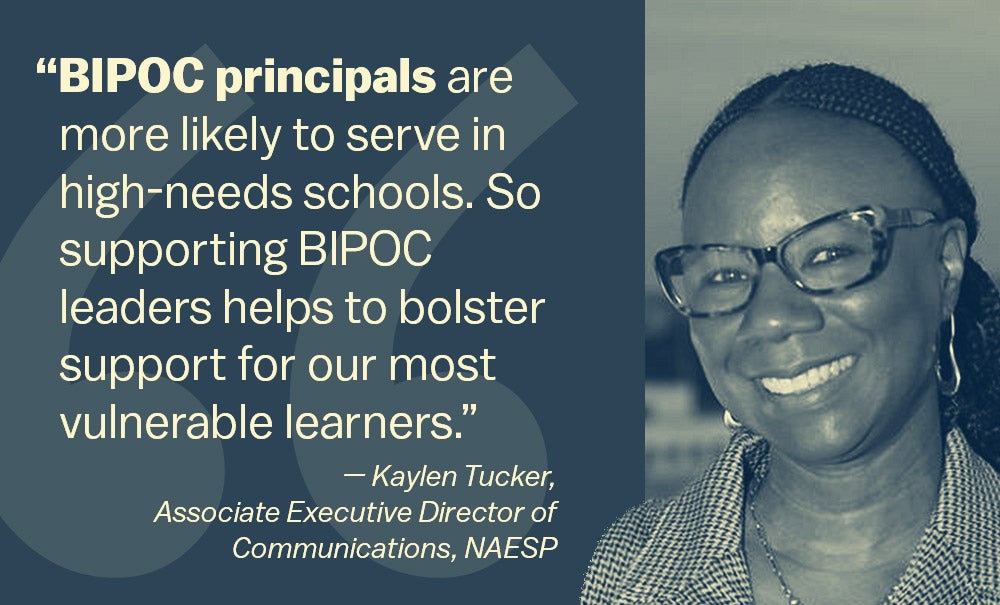This post is the last in a series profiling the University of Connecticut’s efforts to strengthen its principal training program. The university is one of seven institutions participating in Wallace’s University Principal Preparation Initiative (UPPI), which seeks to help improve training of future principals so they are better prepared to ensure quality instruction and schools. A research effort documenting the universities’ efforts is underway. While we await its results, this series describes one university’s work so far.
These posts were planned and researched before the novel coronavirus pandemic spread in the United States. The work they describe predates the pandemic and may change as a result of it. The University of Connecticut is working to determine the effects of the pandemic on its work and how it will respond to them.
The University of Connecticut Administrator Preparation Program (UCAPP) grappled with many moving parts when redesigning its offerings to better address schools’ needs. Leaders worked to build support for the change, overhaul the curriculum, engage faculty, fine-tune internships and strengthen partnerships, among other efforts.
Cutting across all this work is equity. Connecticut, like much of the country, is more diverse than it once was. To help ensure equal educational opportunity for all its students, UCAPP hopes to train principals to spot inequities and negotiate thorny social issues to help resolve them. It has therefore worked to infuse equity into its curriculum and create space for groups education systems often overlook.
Wallace’s editorial staff spoke to UCAPP director Richard Gonzales to find out about the program’s efforts to prepare leaders who can help ensure equity in education. An edited transcript of our conversation follows.
Why was equity so important for you in this redesign?
Statistically, educators of color make up about nine percent of the teacher workforce in Connecticut. But that number drops when you look at administrators. There is some representation of people of color at the assistant principal level, but it goes down at the principal level, it goes down further among the central office leadership, and it’s miniscule when you get to superintendents, deputy superintendents and the state level. You can name all the people of color in Connecticut who are at that level. There are numerous social factors which explain this trend, but the opportunity for us in Connecticut is the understanding that university-district partnerships can positively influence the career trajectory and outcomes for all educators in the talent pipeline, including those historically underrepresented in executive leadership roles.
I felt that we have some ability and a responsibility to fix those sorts of things. And the Wallace initiative gave us the opportunity to try to do that.
How do you define the populations for whom you want to ensure equity?
We are thinking about equity in terms of the people for whom the system is currently not working—inside the school, in the district or in our state—and what it will take to change that.
There is legal and regulatory guidance for some groups. We have federal laws for English language learners, and racial minorities are protected in the Bill of Rights and the Constitution. Section 504 of the Rehabilitation Act of 1973 speaks to medical conditions that may manifest in educational need. There are programs for talented and gifted students. Those are the groups of people we commonly talk about; there's regulatory guidance for those students.
But we also look at other special populations, even if they are not groups protected by regulation. That includes issues related to bullying, related to gender identity and the realities of what principals are going to be dealing with in schools. It's a lot more inclusive and it's a lot more culturally responsive.
It doesn't even have to be anything major. In magnet schools, for example, the magnet population often receives different services and opportunities than the local students. Sometimes they're not in the same classes. Sometimes they're divided physically within the building. The parents are engaged differently by the school. That's the kind of thing that we're talking about, as well.
You’ve tried to adjust your curriculum so it can better train aspiring principals to ensure equity in their schools. What have you changed there?
We’ve added a lot of material throughout the program. In the very first course, we show an hourlong video called So You Want to Talk about Race? In the second, we have an article focused on social justice. There’s a book we added that’s all about equity in schools, one about community engagement, a guide to help meet federal requirements for access to special populations. Those are just a few examples.
A great example of a programming change is what we used to call the Special Education Institute. It was a separate course that met during both summers of the program and covered issues traditionally considered to be part of ‘special education.’ That was focused on that one population. It has now become Leadership for Special Populations. It’s not just about that one group anymore, it’s about equity for all students.
It's a more inclusive idea of leadership—making the school work for all constituencies, regardless of whether they have protected status by statute or regulation. In the very first fall semester course, we begin talking about effective Tier 1 instruction for all, because that is where schools fail most special populations. Principals can set the tone and provide the support for kids to succeed in the general setting. Of course, certain needs require specialized intervention, but we can and should do better at meeting all kids’ needs in the general classroom setting.
You spoke earlier about ensuring representation for minorities among school leadership. A program like UCAPP is, of course, a major source of school leaders in Connecticut. What are you doing to ensure UCAPP students are more representative of educators in the state?
We became a lot more proactive and aggressive in recruitment. Firstly, we know demographically where certain populations are concentrated. So we turned our attention to those areas.
Secondly, we became more proactive about engaging with individuals early and consistently. For example, we do our best to get to know teacher leaders—not necessarily to rush them or pressure them to apply to UConn, but just to get to know them so there's a familiar face when and if they start thinking about moving into leadership.
Our networks help with this work. We have meetings with superintendents and assistant superintendents in our partner districts where we’ll say to them, ‘We'd appreciate you inviting us to any events where you know you are celebrating teacher leadership, just in general. It doesn't have to be specifically around individuals color.’ And there we’ll meet people there who might be coming into the leadership pipeline.
Third, some of us in the faculty will volunteer to be professional mentors. We ask our partners if there are educators of color who are rising stars in their districts. It’s not to recruit for our program. We’re just offering ourselves, as people who've gone before them, to be mentors to them. We're fine if they choose another program that fits their needs better.
We have been doing this mentoring work informally for about six years now. But with the redesign, we started talking more about it and the conversation became public. A lot more faculty members learned about things that some of us do, and many of them started expressing interest. We want to make sure people coming into leadership pipelines know where the opportunities are so we can connect them with a network of support and help them make the best of those opportunities.
We have not yet tracked our mentoring efforts, but we will begin recording the numbers of mentors and mentees as we build out our educator preparation analytics system over the coming months.
How about the faculty? Are there any efforts to bring more diversity to the faculty?
Increasing the diversity of the faculty remains a priority. That's not easy though, because our policy is to hire practitioners, superintendents, deputy superintendents or chief academic officers. As I said before, there's only a handful of people of color in those positions, so it's harder to diversify the faculty than it is the students. I realize I could change our policy of hiring only executive-level district leaders, but that’s not the best solution.
But we do seek out people of color and hire them when we can. Then over time, they establish seniority and start taking leadership roles in the program. We used to have just one gentleman of color in the faculty, who worked his way up to our faculty leadership group. We’ve recently added three other individuals of color to the faculty. In due time I’m sure they’ll do well and earn the opportunity to be in that group. And once you’re in that faculty leadership group, you're involved with the governance and then you have a voice.
And once you have who you think are the right people in your program, are there any formal structures in place to make sure voices of underrepresented groups are heard?
We don’t have formal structures or affinity groups. If folks wanted to do that, we would support it. But it hasn’t come up
What we’re doing is that we’re weaving equity into the fabric of our work. All those efforts we just discussed—the outreach efforts, the connecting, the networking—It's not just me doing it. It’s more comprehensive. It's faculty members, it's our district partners, it’s the dean, it’s the superintendents, all of us constantly thinking about how we develop pipelines to ensure diversity. While there are no formal structures, we're weaving a fabric that's becoming a lot more real. It's a lot more real today than it was three years ago, certainly, more than it was six years ago.
The representation of students of color is changing so they have a critical mass. [According to UCAPP, the proportion of students of color has risen from 13 percent in the class of 2017 to 30 percent in the class of 2021.]
I think because there's now a critical mass, they are more comfortable speaking up. Two things have stood out from their comments. One, the over-representation of white educators among our faculty and guest speakers, and two, equity isn't ‘neatly packaged’ in the program.
Going strictly by the numbers, the first observation is fair. But as I said, there aren't more than a few educators of color who are superintendents or assistant superintendents available to hire, and we are doing better on that front than we were five years ago.
On the second, I get that students want a tight definition of how to "do" leadership for equity. But it doesn't work that way. Equity, like a lot about leadership, is something one must make sense of for him or herself. Unlike with teacher evaluation, there isn't a set of practices that is a best fit for all or most occasions.
We ask students to look, listen, talk, try, adjust, reflect and repeat in order to find their leader identity and espoused leadership theory of action. This applies to equity, too. They will understand this better upon completion of the program or years down the road as practitioners. For example, we recently received a request from our student advisory group for an optional session to further unpack equity as a concept. I think this is a sign of maturity; it signals that they aren't looking for a magic bullet answer anymore.
I don't think it's a coincidence that these issues of equity never came up when there were no faculty of color and basically one person of color in each graduating class. It’s not a coincidence that now, over the last two or three years, when there's a growing number of people of color and growing number of faculty of color, that these issues are surfacing.
How do you measure progress on these issues?
A very simplistic but significant indicator is what aspirant leaders talk about, look for and spend their time working on. If you have to prompt folks to look for gaps—in achievement, opportunity, participation, etc.—then they don't have an equity mindset.
A developmental next step is a systems orientation for inclusivity. For example, we saw in some assignments that students were thinking about how to use certain structures to help multiple special populations, not just one. That's inclusive and cohesive.
Another level still is responsiveness and proactiveness. If they are thinking preventatively for how things might not work for some teachers, students or families, then they are also thinking about which adjustments might be necessary and getting ready to respond accordingly.
One measure we’re looking at is student performance on their core assessment tasks, which are tasks that demonstrate their learning and translation of knowledge and skills into practice. Equity is evaluated in each task.
We recently got the preliminary scoring of the very first task ever to be submitted. The average scores were healthy. But it was promising to see that the highest mean was in the area of equity. [The mean score on equity was 3.13 on a four-point scale; the mean score in the other five areas the assessment measures was 2.95.]
Some of that might have been because of our own scoring, though we don't think we gave too much credit where it wasn't due. But we thought of it as a message received by the students and the faculty.
Have you encountered any resistance to this work?
Oh, we’ve encountered it from all sides. We have an annual Educational Leadership Forum in the fall; part of its purpose is to feature alumni who are doing really good work and making a difference. Some of us talked about adding more diversity to it. And a colleague, an esteemed professional in the field, said, ‘What does all this social justice and equity and race stuff have to do with leadership?’
Another thing we’ve heard is, ‘So I guess you had to change the admission standards in order to get the folks that you're trying to get in.’ We’ve heard a couple of versions of that. We definitely did not change our admission standard. Instead, we got better at recruiting a more diverse candidate pool.
And I personally have also gotten it from the other side. Students have expressed frustration that I, as director, have not pushed harder to effect change. So we’ve dealt with it from both sides. That is to be expected and a sign of good organizational health, in my opinion.
So how do you deal with that?
The thing that probably served us well is to make it all about data and standards. The Professional Standards for Educational Leaders, the current set of standards, are infused with equity, and I used them to make my case. It helped me keep the argument as objective as possible, where it's less about me and my preferences and it's more about the work.
I also had to connect those things to the mission and vision of UCAPP. Our mission is to prepare high-quality and capable leaders for the state of Connecticut. That's why we exist. Our vision is that our graduates will be committed to excellence. That's our vision and that's our reputation.
All I did was focus on standards, the data, the mission and the vision and just kept talking about that. Equity helps us achieve our mission.
It’s not just about me and my vision.
Do recent events, such as the mass protests against police violence, the surge in public support for the Black Lives Matter movement and the U.S. Supreme Court’s decision on D.A.C.A, affect the work at all?
First and foremost, they validate our decision to prioritize equity as an essential component of school leadership. They also compel us to do more. Preparation is an important but single domain in the leadership pipeline. We also have to think about how we help our graduates ensure equity once they’re out in communities leading schools. We must be thoughtful and intentional about advocacy and support to ensure the entire education system, from pre-K to universities, operates fairly and yields equitable outcomes.
School leaders are community leaders. More than ever, we need principals and superintendents who effectively serve all constituencies in the communities they are entrusted to lead, and who confront and alter institutional biases. They need to act with cultural competence and responsiveness in their interactions, decision making and practice.
These are all difficult things to do. But we hope that if we’re careful, welcoming of different perspectives and receptive to feedback, we can help future principals do them and play our small role in addressing the inequities that have long plagued this nation.
STORIES FROM UCONN PRINCIPAL PREP PROGRAM
